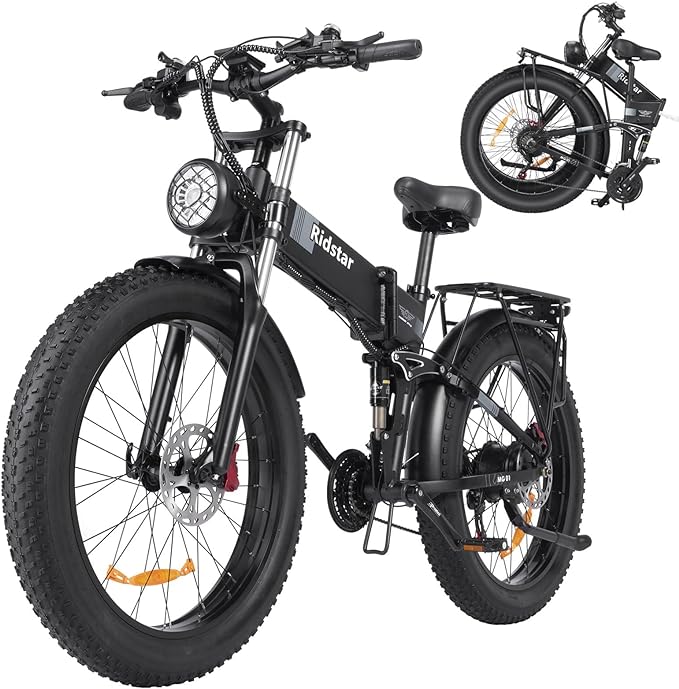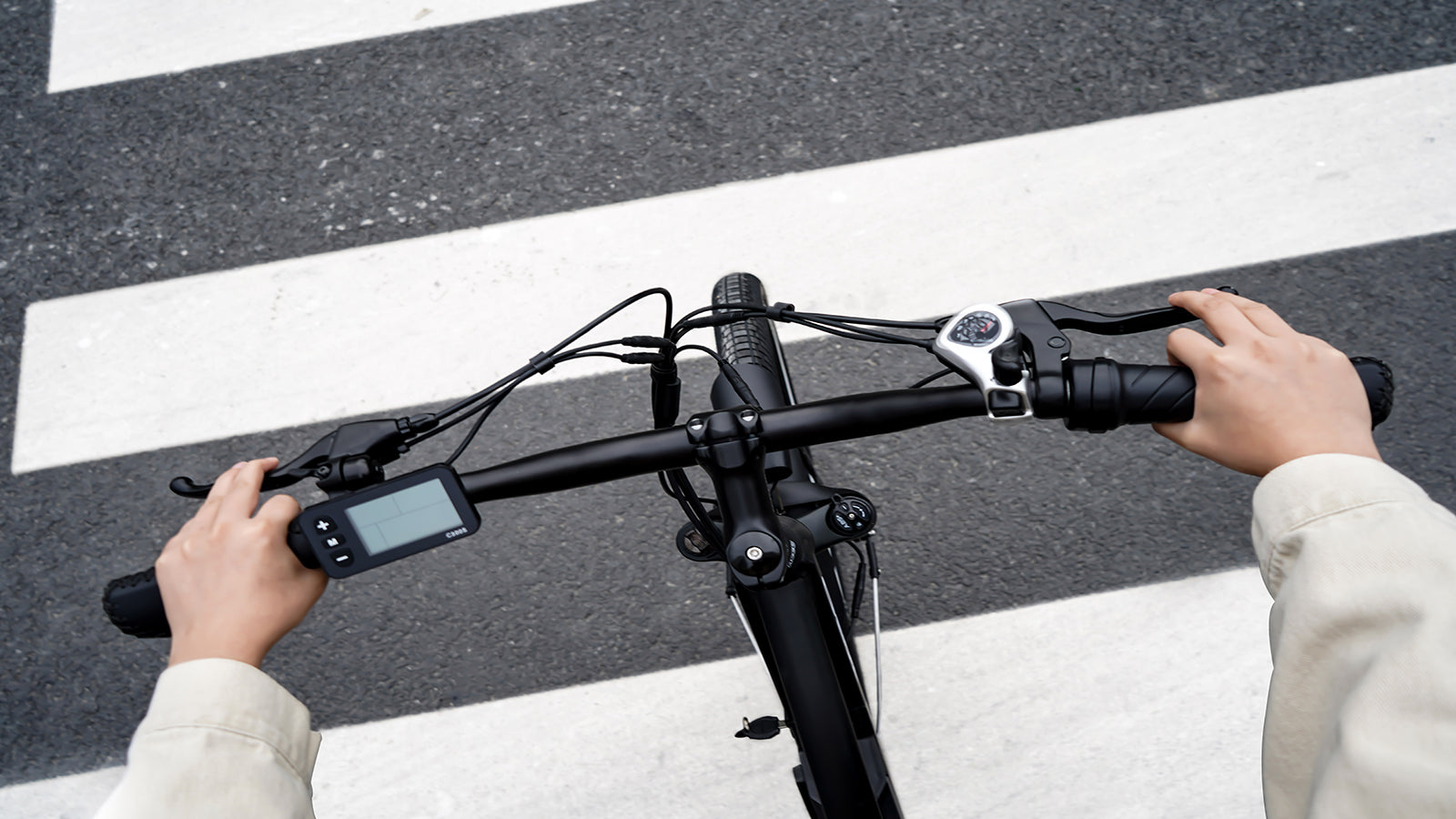What Are The Ebike Laws Around the World?
Electric bikes are on the rise, which makes knowing their laws more important than ever. Electric bikes are governed differently depending on where you live, and some of these laws are just taking shape. The laws governing these types of bikes have not yet been adopted by several nations around the world. Only recently have ebikes been allowed in New York City, and their laws continue to evolve.
How does a country decide to adopt a specific electric bike law? If all countries followed the same laws and regulations, it would make more sense. However, this is not the case. There are a number of reasons for this. The main reason is that different cultures and countries have different opinions about bicycles. Bicycles, for example, are often viewed as an exercise tool in the United States. In Europe, bicycles are typically seen more as a means of transportation.
Here is a chart that breaks down some of the basic laws that govern ebikes in the United States, Canada, Europe, and Australia. Additionally, the article provides more information on each area as well as additional countries, states, territories, provinces, and cities.
While this article covers many ebike laws around the world, it does not cover a number of countries. The electric bike movement is relatively new. As a result, many countries do not have established regulations or legislation pertaining to them.
|
Country |
Motor Allowance |
Top Speed |
Pedal Assist Allowed |
Throttle Allowed |
| USA | ||||
|
Class 1 |
750W |
20 mph |
Yes |
No |
| Class 2 | 750W | 20 mph | Yes | Yes |
| Class 3 | 750W | 28 mph | Yes | Yes (up to 20 mph) |
| Class 4¹ | > 750W | > 28 mph | Yes | Yes |
|
Canada |
500W |
32 km/h |
Yes |
Yes |
| EU | ||||
|
L1e-A |
1,000W |
25 km/h |
Yes |
Yes |
| L1e-B | 4,000W | 45 km/h | Yes | No |
|
Australia |
200W - 250W |
25 km/h |
Yes |
Yes |
The United States of America
As in Canada, electric bicycles are becoming increasingly popular in the United States. Many people now realize that bicycles were not just designed for recreational or exercise purposes. Even though they are great for exercise and fun, their primary function has always been to get from point A to point B. With commutes getting longer and longer, electric bicycles are becoming more popular as an alternative to vehicles.
In the United States, a three-class system has been in place since 2016, but not all states have adopted the plan. There are no set federal regulations for ebikes in the U.S., so legislation has been scattered across the country. Electric bicycles are allowed by the federal government to be regulated by each state or local government.
PeopleForBikes, a national bike advocacy group, has been advocating for clearer ebike laws across the United States for the past few years. The new three-class system was implemented in 2016 with the help of several states and the Bicycle Product Suppliers Association. Although only a few states have implemented this system, it is hoped that many more will do so in the future.
Electric bike riders in the U.S. should be familiar with local cycling laws. Unless otherwise stated by a municipality, all cyclists must abide by the same rules. When in doubt about ebike laws in your city or state, contact your local law enforcement agency. On many federal, state, and local bicycle trails, bikes of different sizes are permitted. Get in touch with the body that regulates that trail for more information about whether your ebike can be used there!
Canada
Canadian electric bike market saturation may not be as high as in Asia or Europe, but it is growing. Electric bikes are replacing cars for more and more people. However, there is one major difference between bikes in Canada and the United States. Unlike in Canada, motors in the U.S. can go up to 750W, whereas in Canada they are limited to 500W.
Nevertheless, both motors operate at relatively the same speed (750W = 20 mph, 500W = 32 km/h or roughly 19.8 mph). A decrease in wattage does not result in a huge difference in rider feel, and the 500W motor provides more range than the 750W.
There are a few minor differences in Canada that do not exist in the United States:
- Unless otherwise specified, helmets are required in all provinces and territories. Below are the details.
- Each province has different age restrictions. In British Columbia, for example, you must be 16 years of age or older to ride an electric bicycle. In Alberta, however, the minimum age is 12.
- Ebikes with throttles may require a license in some provinces.
- All ebikes in Canada must be labeled specifically.
In spite of the fact that ebikes are regulated at 500 Watts by federal regulation, each province, state, and territory has the authority to enact their own laws and regulations.
Alberta: To operate an electric bicycle in Alberta, riders must be at least 12 years old. Additionally, if you are under 16 years of age, you are not allowed to ride an ebike with any passengers. Ebikes do not require a license, registration, or insurance.
British Columbia: In British Columbia, you must be at least 16 years old to operate a motor-assisted cycle (MAC). You do not need a driver's license, registration, or insurance for your electric bike, but you must follow all bicycle safety laws.
B.C.'s electric bike legislation specifies that the vehicle must be equipped with either:
-
Allows the driver to turn the motor on/off
-
Prevents the motor from turning on or engaging before the ebike attains a speed of 3km/h.
As well as: The motor must disengage when the operator;
-
Stops pedaling, or,
-
Releases the accelerator, or,
-
Applies a brake.
Manitoba: In Manitoba, you must be 14 years old to operate an electric bicycle. There are helmet regulations set out by the Canadian government in all areas of Canada. A helmet must fit properly on the rider's head and be properly secured. Riders in Manitoba must cycle in a single file unless passing another cyclist or turning. Bicyclists and motorists must adhere to all laws and regulations regarding standard bicycles and vehicles. Furthermore, a clause states that no bicycle with a rear wheel diameter larger than 40 mm shall be operated on a sidewalk.
New Brunswick: New Brunswick's laws regarding ebikes are in line with federal law. The only exception is that ebikes are allowed on sidewalks in New Brunswick. In all other areas, ebikes must comply with laws and regulations pertaining to standard bicycles and vehicles. In New Brunswick, there is no information regarding an age limit for ebike riders. Get in touch with your local law enforcement if this is a concern.
Newfoundland & Northwest Territories: Ebike riders in these areas do not have an age limit. Reach out to your local law enforcement if this is a concern. All federal ebike laws and regulations apply to riders in Newfoundland and the Northwest Territories with one exception. When operating a bicycle, including an ebike, cyclists are not required to wear a helmet.
Nunavut: In Nunavut, there is no information regarding an age limit for ebike riders. If this is an area of concern, contact your local law enforcement agency. With one exception, riders in Nunavut must abide by all federal ebike laws and regulations. Bicyclists are not required to wear helmets when riding. All laws and regulations pertaining to standard bicycles and vehicles must be followed by operators of ebikes.
Nova Scotia: In Nova Scotia, there is no information regarding an age limit for ebike riders. Reach out to your local law enforcement if this is a concern. On all highways in Nova Scotia, cyclists must ride in single file, except when passing another cyclist. Bicycles are allowed on all roads in Nova Scotia unless there are signs stating "No bikes or slow-moving vehicles."
Ontario: In Ontario, you must be 16 years old or older to ride an electric bicycle. To ride an electric bicycle, you do not need a driver's license, vehicle permit, or license plate. You must, however, follow the same rules of the road as a standard cyclist. Toronto has permitted electric bikes to use bike lanes since 2014.
With a few exceptions, electric bikes are allowed on the same roads and highways as regular bicycles;
- On municipal roads, including sidewalks, where bicycles are prohibited.
- On municipal roads, sidewalks, bike paths, bike trails, or bike lanes where electric bicycles are prohibited.
Prince Edward Island: To operate an electric bicycle on Prince Edward Island, you must be at least 16 years old. Electric bicycles are classified differently in this area than they are in other parts of Canada. Prince Edward Island classifies ebikes as motor assisted pedal bikes with a maximum power output of 50 cc's. The top speed, however, cannot exceed 32 km/h. Ebike riders must follow the same laws and regulations as riders of standard bicycles and vehicles.
Quebec: Quebec requires that you be at least 14 years old to operate an electric bicycle. For drivers aged 14-17, a class 6D license is required, which is the same license needed to operate an electric moped or scooter. If you are 18 or older, you do not need a driver's license. In Quebec, ebikes do not need to be registered or insured. All public roads except highways allow ebikes. Bicyclists who ride electric bicycles in Quebec must follow the same rules that apply to all cyclists, including the highway safety code.
Saskatchewan: Saskatchewan requires that all ebike riders be at least 14 years old. Under The Traffic Safety Act, riders must comply with all the rules that apply to a normal vehicle. Pedal-assisted electric bicycles cannot be operated in areas where municipalities restrict their use.
Yukon: Ebike riders in Yukon do not have an age limit. Reach out to your local law enforcement if this is an area of concern. Helmets are not required in Yukon, like a few other regions of Canada. As long as the motor is not engaged, you can ride an ebike on the sidewalk. Electric bicyclists in Yukon must follow the same rules as all cyclists.
The European Union
There is some controversy over who invented the first human propelled bicycle, but there is no doubt it came from Europe. Since the invention of the bicycle, much progress has been made. Especially since this is an article about electric bikes!
In Europe, there are several countries. Only European Union members will be covered in this article.
There are four types of electric bicycles allowed in the EU. However, some of these vehicles will be distinguished from electric bikes. In the case of an electric cycle with a speed limit exceeding 25 km/h and three wheels instead of two, the class is L2e.
It is possible to identify each type of electric cycle in the European Union by using the chart below.
|
Class Type |
Power Output |
Top Speed |
Pedal assist or throttle? |
# of Wheels |
Distinguished as; |
|
L1e-A |
< 1,000W |
25 km/h |
Both |
2, 3, 4 |
Power cycles |
|
L1e-B |
< 4,000W |
45 km/h |
Pedal assist only |
2 |
Mopeds |
|
L2e |
< 4,000W |
45 km/h |
Pedal assist only |
3 |
Three wheeled mopeds |
|
L6e |
N/A |
45 km/h |
Pedal assist only |
4 |
Light quadricycle |
Registration and insurance are required for all electric cycles. As a result, bikes are registered and riders have peace of mind that if their bicycles are stolen, they can track them down and locate them.
However, there have been recent developments within the EU regarding insuring L1e-A class bikes. In September 2018, European Union member states gained the authority to exempt new types of electric motor vehicles from mandatory third-party motor insurance. This condition is that the member states must establish a national compensation fund that will provide compensation to accident victims.
Despite the fact that there are set standards for ebikes and standard bikes in general throughout the EU, each member state is free to set their own regulations based on road traffic laws. Please take note of the following general cycling notes, but be aware that specific road traffic laws may apply in your country.
In general, cyclists in the EU;
- Cyclists must stay to the right of the road, bike lane, or carriageway. In the United Kingdom and Ireland, cyclists must stay to the left.
- When making a turn, cyclists must use the appropriate hand signals.
- Cyclists must ride single file, except when passing another cyclist, making a turn, where cycling traffic is heavier than normal, or when the carriageway is wide enough.
- Cyclists are required to use cycle lanes when they are available. Unless there is a cycling lane on the road, cyclists cannot use motorways or similar roads. * Several EU member states have designated road traffic laws that, when present, prohibit electric bicycles from using bicycle lanes. You should check with local law enforcement to see if this applies to you.
- At all times, cyclists are required to have at least one hand on the handlebar.
- It is illegal for cyclists to tow, or push objects that hinder their cycling or endanger other cyclists, pedestrians, or drivers.
- Individuals pushing or walking a bike on foot are considered pedestrians, and can therefore use the sidewalk.
Helmets are required in all European countries unless specified below;
|
Country |
Helmets are mandatory for; |
|
Austria |
Children |
|
Croatia |
Cyclists under 16 |
|
Czech Republic |
Cyclists under 18 |
|
Hungary |
Cyclists outside urban areas travelling at speeds over 50 km/h |
|
Latvia |
Children |
|
Liechtenstein |
At speeds greater than 20 km/h |
|
Lithuania |
Cyclists under 18 |
|
Malta |
All pedal assisted bicycles and for children under 10 |
|
Slovenia |
Children |
|
Spain |
Cyclists under 16 and for riders outside urban areas |
|
Sweden |
Cyclists under 15 |
|
Switzerland |
Cyclists travelling at speeds over 20 km/h |
Australia
Electric bicycles are just breaking through to the market in Australia. As ebikes are new to the area, many Australians wonder what they can and cannot do with them.
Manufacturers in Australia have two options. Electric bikes are allowed to have only a throttle and no pedal-assist system. These bikes are limited to 200W of power. As an alternative, you can have a 250W bike with a pedal-assist system. By using the throttle alone, a pedal-assisted bike cannot exceed 6 km/h. Speeds are capped at 25 km/h when the pedal assist is engaged.
Off-road electric bicycles are not regulated. A PACP (Power Assisted Pedal Cycle) that exceeds 250W must be classified as a motorbike and registered accordingly. A rider on a PACP with a power output greater than 250W must also be licensed and insured. Dealers like Reef offer ebikes with 1,000W motors designed especially for the challenging terrain of the outback and surrounding areas. Within city limits or on roads within Australia, riders must obey the laws and regulations listed above.
There are several laws that apply to all cyclists in Australia, not just those using electric bikes. All ebike users must follow regular biking laws, as stated above.
The following bicycle laws are notable in Australia:
- Wear a bicycle helmet that has been approved by the government at all times.
- Equip a bell or horn.
- The bike should have (at least one) effective brake.
- Be visible at night by using lights and reflectors.
- Use pedals to propel your bike. Australia does not recognize bicycles without pedals as bicycles.
- When riding a bicycle on a footpath, riders 12 years and under are allowed if they are uncomfortable on a road or bicycle lane.
In recent years, there has been a backlash against bicycles in Australia. In 2015 and 2016, Sydney underwent drastic changes regarding bicyclists in general. Safety issues were discussed in the media. In New South Wales, the government decided that the best way to protect cyclists was to get them off the road. In addition to trying to get rid of bike lanes throughout Sydney, law enforcement also heavily fined cyclists for small and major infractions.
Sydney has opposed the backlash against cyclists. It is currently building a 200-kilometer bike network. Cyclists will be separated from traffic and pedestrians, encouraging more commuters to bike to work! Sydney has seen a 100% increase in the number of cyclists on the roads in the past three years.
Asia
Asia has the most electric bikes in the world. SixthTone reports that there are more than 200 million registered ebikes in China alone. According to the article, the country rolls out nearly 30 million ebikes on average each year. There is no doubt that electric bikes are popular in China. As a result, the legislation surrounding them is constantly changing.
From April 15, 2019, ebikes will have new standards that all manufacturers must comply with;
- From 20 km/h to 25 km/h, the top speed will be raised.
- Motors must not exceed 48 volts or 400 watts.
- Bikes cannot weigh more than 55 kilograms.
- Pedals will be required on ebikes so that they can be ridden both manually and electrically.
Similarly to any nation, local, state, or provincial laws pertaining to ebikes can override national legislation. Beijing is no exception. Beijing requires all electric bike users to have a driver's license as well as to register their bikes with the local government. The city is also working to pass legislation that will reduce the top speed from 25 km/h to 15 km/h. Slower than the speed at which a bicycle can be propelled without a motor.
Another Asian country that is no stranger to electric bicycles is Japan. According to the Japanese Bicycle Promotion Unit, six out of every ten bicycles on the road are electric. Regulations for electric bicycles in Japan differ from those in China. Motors in Japan cannot exceed 250W and a speed of 24 km/h. Furthermore, all bikes, including electric and standard bikes, must be registered.
Pedal assist electric bicycles are only available in Japan. The bike must be registered as a 50 cc engine or smaller if it has a throttle. You will also need a driver's license and bicycle plates.
The laws regarding bicycles and ebikes in Japan have been lax in the past. It was not uncommon to see bikers riding down the sidewalk, against the flow of traffic, or with umbrellas in hand. Recently, Japanese law enforcement has been stricter and more proactive regarding citations to cyclists who are not following the rules of the road.
Bicyclists in Japan must follow the same rules of the road as all drivers. Cyclists must follow bike lanes when they are present. Cyclists cannot ride in pedestrian-only areas or lanes. Pedestrians cannot ignore stop signs or stoplights, and their bikes must have working brakes. Make sure you are riding safely and responsibly by contacting your local government or law enforcement to learn about the bike laws in Japan.
An Ending Note
The use of electric bicycles is on the rise. They're not going anywhere. Around the world, as more legislation restricts the use of internal combustion engines, more and more people are purchasing electric bikes. It is important to be aware of the laws and regulations in your area when using an ebike in order to decrease the risk of citations and increase safety.



